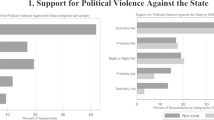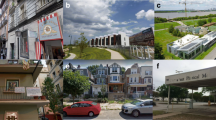Abstract
Political redistricting is a process used to redraw political boundaries based on a number of criteria that include demographic criteria (e.g. population equality and minority representation) and geographic criteria (e.g. contiguity and compactness). Redistricting can be highly controversial because it is possible that the drafters can be involved in the decision making where to draw political boundaries. The use of computers in political redistricting can remove several factors such as intentions of the decision makers or the majority in political views or race from the redistricting process. The main purpose of this paper is to develop a heuristic approach called Give-And-Take Greedy model in order to solve large scale political redistricting problem with respect to a strict population equality and contiguity. The heuristic follows the basic greedy concept to accept a best solution every iteration. The distinctive concept of the heuristic is to exchange or swapping population units within specified districts as well as to use the more efficient contiguity checking method. The computational results from Give-And-Take greedy heuristic can successfully be applied to real redistricting plans, especially for a congressional redistricting in the United States in satisfying with a strict equal population.







Similar content being viewed by others
References
Morrill, R. L. (1981). Political redistricting and geographic theory. Washington, DC: Association of American Geographers.
Altman, M., & McDonald, M. P. (2010). The promise and perils of computers in redistricting. Duke Journal of Constitutional Law and Public Policy, 5, 69–112.
Altman, M. (1998). Modeling the effect of mandatory district compactness on partisan gerrymandering. Political Geography, 17(8), 989–1012.
Altman, M., McDonald, K., & McDonald, M. P. (2005). From crayons to computers: The evolution of computer use in redistricting. Social Science Computer Review, 23(3), 334–346.
Cooper, L. (1964). Heuristic methods for location-allocation problems. SIAM Review, 6, 37–54.
Xiao, N. (2008). A unified conceptual framework for geographical optimization using evolutionary algorithms. Annals of the Association of American Geographers, 98(4), 795–817.
Garfinkel, R. S., & Nemhauser, G. L. (1970). Optimal political districting by implicit enumeration techniques. Management Science, 16(8), B495–B508.
Shirabe, T. (2009). Districting modeling with exact contiguity constraints. Environment and Planning B: Planning and Design, 36, 1053–1066.
Kim, M. J., & Xiao, N. (2017). Contiguity-based optimization models for political redistricting problems. International Journal of Applied Geospatial Research, 8(4), 1–18.
Kim, M. J. (2018). Multiobjective spanning tree based optimization model to political redistricting. Spatial Information Research, 26(3), 317–325.
Weaver, J. B., & Hess, S. W. (1963). A procedure for nonpartisan districting: Development of computer techniques. The Yale Law Journal, 72, 288–308.
Hess, S. W., Weaver, J. B., Siegfeldt, H. J., Whelan, J. N., & Zitlau, P. A. (1965). Non-partisan political redistricting by computer. Operations Research, 13, 998–1006.
Mills, G. (1967). The determination of local government electoral boundaries. Operations Research Quarterly, 18, 243–255.
Morrill, R. L. (1973). Ideal and reality in reapportionment. Annals of the Association of American Geographers, 63, 463–477.
Helbig, R. E., Orr, P. K., & Roediger, R. R. (1972). Political Redistricting by computer. Communications of the ACM, 15(8), 735–741.
Plane, D. A. (1982). Redistricting reformulated—A maximum interaction minimum separation objective. Socio-Economic Planning Sciences, 16(6), 241–244.
Robertson, I. M. L. (1982). The delimitation of local government electoral areas in Scotland: A semi-automated approach. The Journal of the Operational Research Society, 33, 517–525.
Hojati, M. (1996). Optimal political districting. Computers & Operations Research, 23(12), 1147–1161.
George, J. A., Lamar, B. W., & Wallace, C. A. (1997). Political district determination using large-scale network optimization. Socio-Economic Planning Sciences, 31(1), 11–28.
Barkan, J. D., Densham, P. J., & Rushton, G. (2006). Space matters: Designing better electoral systems for emerging democracies. American Journal of Political Science, 50(4), 926–939.
Openshaw, S. (1977). Optimal zoning systems for spatial interaction models. Environment and Planning A, 9, 169–184.
Openshaw, S., & Rao, L. (1995). Algorithms for reengineering 1991 Census geography. Environment and Planning A, 27(3), 425–446.
Alvanides, S., Openshaw, S., & Duke-Williams, O. (2000). Designing zoning systems for flow data. In P. Atkinson & D. Martin (Eds.), GIS and geocomputation: Innovations in GIS (pp. 115–134). London: Taylor and Francis LTD.
Marsten, R. E. (1974). An algorithm for large set partitioning problems. Management Science, 20(5), 774–787.
Nygreen, B. (1988). European assembly constituencies for Wales-comparing of methods for solving a political districting problem. Mathematical Programming, 42, 159–169.
Mehrotra, A., Johnson, E. L., & Nemhauser, G. L. (1998). An optimization based heuristic for political districting. Management Science, 44(8), 1100–1114.
Vickrey, W. (1961). On the prevention of gerrymandering. Political Science Quarterly, 76(1), 105–110.
Thoreson, J. D., & Liittschwager, J. M. (1967). Computers in behavioral science. Legislative districting by computer simulation. Behavioral Science, 12(3), 237–347.
Gearhart, B. C., & Liittschwager, J. M. (1969). Legislative districting by computer. Behavioral Science, 14(5), 404–417.
Liittschwager, J. M. (1973). The Iowa redistricting system. Annals of the New York Academy of Sciences, 219, 221–235.
Harris, C. C., Jr. (1964). A scientific method of districting. Behavioral Science, 9, 219–225.
Nagel, S. S. (1965). Simplified bipartisan computer redistricting. Stanford Law Review, 17, 863–899.
Kaiser, H. (1966). An objective method for establishing legislative districts. Midwest Journal of Political Science, 10, 200–213.
Browdy, M. (1990). Simulated annealing: An improved computer model for political redistricting. Yale Law and Policy Review, 8, 163–179.
Macmillan, W. D., & Pierce, T. (1994). Spatial analysis and GIS. London Bristol, PA: Taylor & Francis.
Alvanides, S. (2000). Zone design methods for application in human geography. Ph.D. thesis, School of Geography, University of Leeds.
Macmillan, W. D. (2001). Redistricting in a GIS environment: An optimization algorithm using switching-points. Journal of Geographical Systems, 3(2), 167–180.
Bozkaya, B., Erkut, E., & Laporte, G. (2003). A tabu search heuristic and adaptive memory procedure for political districting. European Journal of Operational Research, 144(1), 12–26.
Horn, M. E. T. (1995). Solution techniques for large regional partitioning problems. Geographical Analysis, 27(3), 230–248.
Bação, F., Lobo, V., & Painho, M. (2005). Applying genetic algorithms to zone design. Soft computing–A fusion of foundations. Methodologies and Applications, 9(5), 341–348.
Cheshmidari, M. N., Ardakani, A. H. H., Alipor, H., & Shojaei, S. (2017). Applying Delphi method in prioritizing intensity of flooding in Ivar watershed in Iran. Spatial Information Research, 25(2), 173–179.
Hamidy, N., Alipur, H., Nasab, S. N. H., Yazdani, A., & Shojaei, S. (2016). Spatial evaluation of appropriate areas to collect runoff using Analytic Hierarchy Process (AHP) and Geographical Information System (GIS) (case study: the catchment “Kasef” in Bardaskan. Modeling Earth Systems and Environment, 2(4), 172.
Openshaw, S. (1996). Developing GIS-relevant zone-based spatial analysis methods. In P. Longley & M. Batty (Eds.), Spatial analysis: Modelling in a GIS environment (pp. 55–73). Cambridge: GeoInformation International.
Ardakani, A. H. H., Shojaei, S., Ekhtesasi, M. R., & Ardakani, A. P. (2018). Evaluation of the quantitative and qualitative relationship between springs and geological formations using geostatistics as well as Boolean logic in Iran. Arabian Journal of Geosciences, 11(14), 377.
Cormen, T. H., Leiserson, C. E., Rivest, R. L., & Stein, C. (2001). Introduction to algorithms. Cambridge: The MIT Press.
Guo, D., & Jin, H. (2011). iRedistrict: Geovisual analytics for redistricting optimization. Journal of Visual Languages & Computing, 22(4), 279–289.
Williams, J. C., & ReVelle, C. S. (1996). A 0–1 programming approach to delineating protected reserves. Environment and Planning B, 23, 607–624.
Author information
Authors and Affiliations
Corresponding author
Additional information
Publisher's Note
Springer Nature remains neutral with regard to jurisdictional claims in published maps and institutional affiliations.
Appendix: The process of Give-And-Take greedy algorithm
Appendix: The process of Give-And-Take greedy algorithm


Rights and permissions
About this article
Cite this article
Kim, M.J. Give-And-Take heuristic model to political redistricting problems. Spat. Inf. Res. 27, 539–552 (2019). https://doi.org/10.1007/s41324-019-00254-4
Received:
Revised:
Accepted:
Published:
Issue Date:
DOI: https://doi.org/10.1007/s41324-019-00254-4




